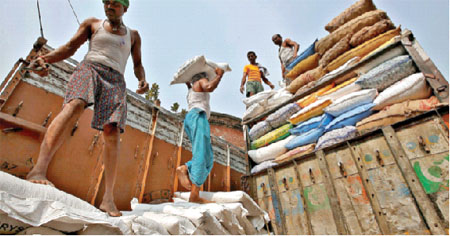After the ban on wheat exports, Prime Minister Narendra Modi-led Government decided to restrict the overseas sale of sugar. Common men were apprehensive whether India had storage of essential food items. The Government decided to restrict overseas sales of the two food items within a gap of 11 days in order to ensure domestic supplies at affordable prices for the public.
The decision to ban wheat arose as the production was hit by heat waves during the final maturing stage of the grain. There was no such production shortfall for sugar but the export ban was aimed to eliminate speculators and hoarders from manipulating domestic supply scenarios by taking advantage of a deficit in the global sugar production, arising due to a production shortfall in Brazil, the world leader in sugar production. The ban on wheat exports was announced on May 13 while the news of the curb on sugar exports came on May 24.
India, the world’s second-biggest producer and exporter of sugar after Brazil, has decided to restrict the exports of the sweetener from June 1. The move to restrict sugar exports was done to ensure domestic supplies at affordable prices during the lean season that runs from June to the festival season that starts in October. In April, the food inflation hit a multi-year high of 8.9 per cent, prompting the Government to put export restrictions on wheat and sugar in May to douse off any negative supply sentiments in the domestic markets.
India is committed to stablise domestic sugar prices during the lean season running up to the festival season, said Sudhanshu Pandey, the country’s Food Secretary.
The country’s festival season runs from October to November when the domestic sugar demand reaches its peak. The festival season demand for sugar peaks during Diwali, the festival of lights. The period between June and October is treated as the lean season for production as no fresh sugar supplies are added to the stocks.
India will restrict overseas sales of sugar from June 1, an order of the Directorate General of Foreign Trade (DGFT) said. This in an attempt to contain the high food price that led to inflation in Asia’s third-largest economy.
The curb on the exports of sugar (raw, refined, and white) will be valid until October 31, 2022.
The latest restriction will not apply to sugar meant for exports to the European Union and the United States under a special quota, the order said. After June 1, sugar exports would be allowed with specific permission, the food secretary said. The global supply situation reflects a shortage of sugar due to lower production in Brazil. The basic aim to regulate the sugar exports is to safeguard domestic supply, by ruling out any sentiments of shortage in the market. Global farm commodities prices came under huge pressure after Russia had invaded neighbour Ukraine in the last week of February. Global crude prices hit a multi-year high in March while several countries imposed export bans on essential food items to ensure local supplies. Overall, high prices ruled over the world.
As a pre-emptive step, India restricted the overseas sales of farm commodities like wheat and sugar to erase negative sentiments about supply shortages in domestic markets. In 2021-22, India will allow sugar exports of up to 10 million tonnes, the first-ever cap in six years on sugar exports. India exported a record 8.2 million tonnes until May 25, out of total export deals of 9 million tonnes for the current year (2021-22), according to the food ministry’s latest update on May 25.
India exported 7 million tonnes in 2020-21 compared with around 6 million tonnes in 2019-20. The major export destinations for Indian sugar include Indonesia, Sri Lanka, Bangladesh, the UAE, Malaysia, and African nations.
“The record sugar exports will benefit all the stakeholders – cane farmers and the sugar industry,” said Aditya Jhunjhunwala, President of the Indian Sugar Mills Association (ISMA).













Comments